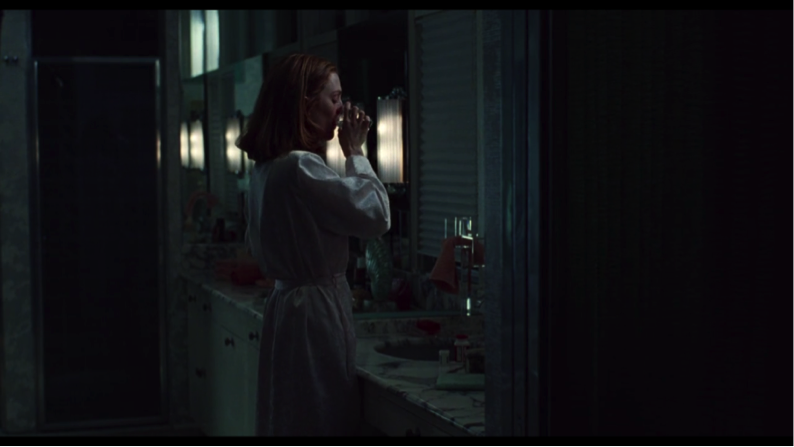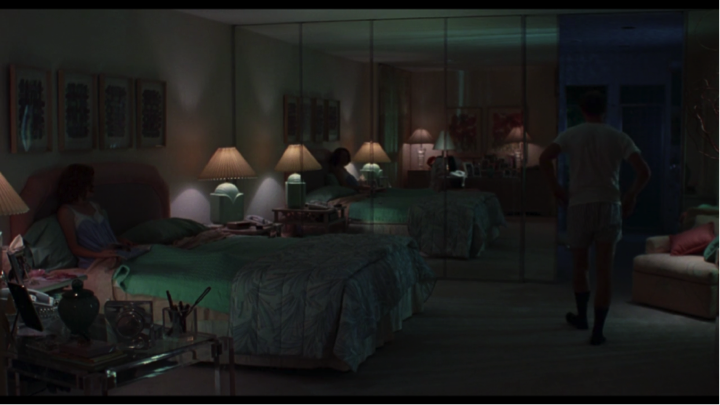Rather than simply penning a glowing admiration of Todd Hayne’s talents as a director, as is usual with these anniversary based articles (he turns 55 today, 2 January, 2016), in the following piece I am instead opting to briefly deconstruct his 1995 film [SAFE] in order to find its significance in retrospect, and to demonstrate why his lack of an Academy Award at this point is so baffling. Of course this may soon change, with his latest film Carol (2015) seeming an early favourite for some kind of accolade at next year’s ceremony, but with both [SAFE] (1995) and Far From Heaven (2002), arguably the directors finest work, having been snubbed in years gone by, there are some of us that are holding out for inevitable disappointment.
A recurring theme in the work of Haynes is the idea its characters are being trapped. This concept manifests itself in several forms throughout the American director’s filmography. Julianne Moore’s character in Far From Heaven for example finds herself bound to a certain set of values and societal morals, whereas the feminine/masculine divide itself is a source of oppression for Velvet Goldmine’s (1998) ensemble cast, and then in the newly released Carol we can observe this theme in the form of the loveless relationship that the eponymous lead desires to escape.
In [SAFE] however, the idea of being trapped is at its most potent and claustrophobic. Perhaps Haynes over the years has learnt to better hide the ideology of his films under layers of technical proficiency and artistic experience, but as his first major excursion into the theme that would go on to define his career, it’s visual symbolism and presentation to the audience are at their most raw and powerful.
Below are a few frames from the film, wherein it’s main character Carol White (Julianne Moore) is depicted, through imagery and visual denotation, as trapped not by the sickness she fears or the marriage that seems to be dwindling, but by the very environment around her, the source of her ‘chemical sensitivity’ and source of her imprisonment.
Fig I. The geometry between the doorframe and shower door frames her within a space significantly smaller than the entire frame
Fig 2. The space contracts and she is framed twofold, both between the doorway, and the even smaller space formed by the black rectangle box of the cabinet behind her
Fig 3. Carol is now no longer framed within the room, but her reflection, the very essence of her being, and the version of herself she projects to the outside world, is caught between the narrow parallels of the mirror
As you can see, the space gets smaller and contorts itself to contain the image of Carol in increasingly restrictive areas, something mirrored by her rapid descent into psychological illness and the encroaching walls of her mental state. Haynes further reinforces this idea with the smart series of zooms he employs throughout [SAFE], punctuating the film at moments of particular intensity such as Carol’s breakdown at a friend’s party, or her first medical exposure to the element she is allergic to.
This technique is used in reverse just once within the film, and it comes at the moment that Carol experiences a moment of hope and enlightenment. As she watches a videotape detailing an explanation of her illness that reassures her that her disease may not simply be psychosomatic, the frame eases its confines and momentarily releases her.
The difference is subtle but certainly intended, Carol’s mental imprisonment eases and she is momentarily unbound as she realises that she is not alone, and that there is in fact hope for her and support available from a community of peers.
Even the title itself, [SAFE] stylised with the brackets, depicts a restrictive space and the idea of containment within its framing of the word. And herein lays another dimension of Todd Hayne’s technical brilliance.
Haynes is openly gay and his films have been an important maturation for LBGT filmmaking, taking the values of the movement and the community at large to a wider audience and expanding the scope of focus to explore the ideas of homosexuality not simply as a state of sexuality, but as a state of identity in itself. Though [SAFE] may not explicitly depict or concern any gay characters or content, its analogical reading is brimming with subtext and prominently displays at the ideology of its creator in a manner hidden from prejudices.
Personally, I consider [SAFE] to be Todd Haynes’ most complete work, but that is not to say that his films since have been lacking clarity or composure, rather it is the moment in which Haynes found the idea that would go on to define his career, and through his revisiting of it he has not created repetition or monotony, but consistency instead.







